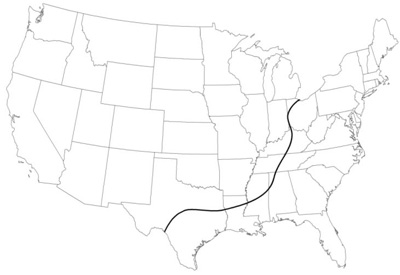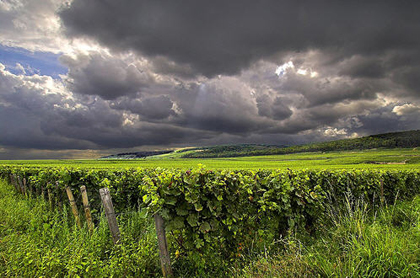Dr Vino's wine blog
wine talk that goes down easy
Calculating the carbon footprint of wine: my research findings
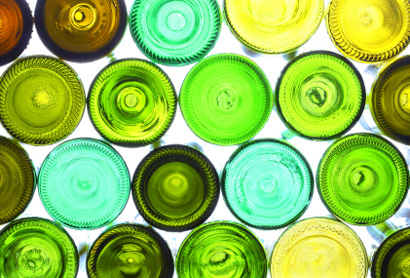
Is that a whiff of raspberries and leather you get from that red wine–or a whiff of petroleum? With some premium wines consuming three times their weight in petroleum, don’t be surprised if it is the latter.
My previous postings on the carbon footprint of wine made me want to determine just how much carbon is involved in the making and transporting of our favorite beverage. So I collaborated with Pablo Paster, a sustainability metrics specialist, and we ran the numbers. Our findings have just been published as a working paper for the American Association of Wine Economists, available here as a pdf.
While I welcome your comments on the whole paper, I’ll post some of the key findings here:
* Organic farming has lower greenhouse gas (GHG) intensity than conventional farming but I was surprised that the difference wasn’t greater. Clearly there may be other differences in a local ecosystem but the GHG difference was surprisingly small. But on the whole, it was the transportation that played a more significant role from a GHG perspective.
* Regarding the “food miles” debate, we find that distance does matter.
* But not all miles that a bottle travels are the same. Efficiencies in transportation make container ships better than trucks, which in turn are better than planes.
* Shipping premium wine, bottled at the winery, around the world mostly involves shipping glass with some wine in it. In this regard, drinking wine from a magnum is the more carbon-friendly choice since the glass-to-wine ratio is less. Half-bottles, by contrast, worsen the ratio.
* Shipping wine in bulk from the source and bottling closer to the point of consumption lowers carbon intensity.
* Light packaging material such as Tetra-Pak or bag-in-a-box has much less carbon intensity.
* Using oak chips is a more carbon friendly alternative than oak barrels, particularly those that are shipped assembled and empty around the world
* There’s a “green line” that runs down the middle of Ohio. For points to the West of that line, it is more carbon efficient to consume wine trucked from California. To the East of that line, it’s more efficient to consume the same sized bottle of wine from Bordeaux, which has had benefited from the efficiencies of container shipping, followed by a shorter truck trip. In the event that a carbon tax were ever imposed, it would thus have a decidedly un-nationalistic impact.
What does this mean for the green wine consumer? Drinking a wine made without agrichemicals, from larger format bottles, or wine that has traveled fewer miles is the more “green” option. Beyond these points (or in addition to them), you could perform your own carbon offsets, for example, by giving up one bottle for another and saying no to bottled water.
“Red, White and “Green”: The Cost of Carbon In the Global Wine Trade,” By Tyler Colman and Pablo Paster
UODATE: This paper was been published in the March 2009 issue of the Journal of Wine Research
image 1: istockphoto.com
2007 vintage verbatim: Tom Lubbe on biodynamics
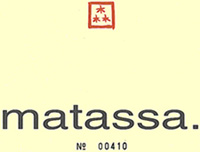 Tom Lubbe, a biodynamic vigneron in Roussillon who hails originally from South Africa, writes in responding to the statement, “We’ll see who are the real biodynamic producers this year. If they’re really biodynamic, this year they won’t have any wine.” I tasted Tom’s excellent old-vine Grenache called Matassa earlier this year. To his email:
Tom Lubbe, a biodynamic vigneron in Roussillon who hails originally from South Africa, writes in responding to the statement, “We’ll see who are the real biodynamic producers this year. If they’re really biodynamic, this year they won’t have any wine.” I tasted Tom’s excellent old-vine Grenache called Matassa earlier this year. To his email:
This is the kind of lunatic (no positive connection to lunar cycles) assertion that the Bordelais, or those who spend too much time in the environs, are prone to making. A difficult vintage should have no bearing on the basis of your cultural method in the vineyard. The assumption that no “truly” biodyamic (and organic?) vigneron could make wine in 2007 shows a paucity of comprehension for what biodynamics (and organics?) actually entails and the multiple benefits that issue from a more holistic, natural approach to viticulture. A naturally farmed vineyard’s ability to resist pathogens is dependent on the condition of the soil. If the soil is alive with a rich diversity of microbial activity (and the oft forgotten earthworm) the vineyard’s resistance to disease is naturally stronger , much like the bacteria we need in our gut . In fact, the real grape when fighting off pathogens such as oidium or downy mildew without the interference of systemic chemicals produces increased levels of polyphenols, which as we now know affect not just taste but our health and nutrition as well. In real wine I like to think these three elements (taste, nutrition and health) are as intimately linked as they are in real food.
Indeed, if a vigneron labours through the years to regenerate a living soil and still cannot take in a reasonable harvest this would be a sure sign that they are working a mediocre terroir for grapes and they should either relocate their viticultural efforts or plant rice. That Bordeaux was originally a swamp developed by the English and Dutch, two essentially mercantile/military nations with insatiable thirsts for cheap booze, does come to mind when regarding the nature and frequency of bad vintages in Bordeaux. (Does M. Rolland do sake?) Kampai, Tom
Related: “Green wine: the zen forest of Matassa, Roussillon”
“2007 vintage verbatim: Nicolas Joly on biodynamics“
2007 vintage verbatim: Nicolas Joly on biodynamics
How will vintage 2007 turn out in France where it rained much of the summer? A few weeks ago, I posted a comment that someone in the trade in France told me: “We’ll see who are the real biodynamic producers this year. If they’re really biodynamic, this year they won’t have any wine.”
With a rebuttal today, via email from the Coulée de Serrant in Savennieres in Loire, we have Nicolas Joly. He is a leading practitioner of biodynamics and wrote the book “From Sky to Earth” to help vignerons around the world in their conversion to biodynamics. I say vignerons and not “winemakers” because his business card reads “Nicolas Joly, Gérant de la Société, Nature assistant and not a winemaker.” To his email:
All serious biodynamists had no problems with disease! I lost maybe 1% of the crop. There were as many people caught on the conventional side as on the organic/biodynamic side. Any serious person will confirm this. Those who were caught were those who have not much experience with mildew-rare though they are. Mildew’s development is a very fast–one or two days as opposed to a month for oidium–so you need to react very fast reaction. It’s simple: treat after the rain with very small doses of copper each time. We used around 5.5 to 6 kg of cooper per hectare this year, about 50% more than last years. We had the strongest pressure for 20 years.The 501 BD treatment was also very efficient. The negative statements come from people who either have no understanding of BD or who want to justified the fact that they did not move toward a better farming.
I have a new book coming in the US soon for consumers (it just came out in French ) and will be available in Italian, Portuguese and Spanish soon.
On February 9th and 11th part of the group “Return to Terroir” will be in Montreal and Toronto [for a tasting of biodynamic wines].
(image, with permission)
Talking Champagne with Peter Liem of Wine & Spirits
 Is the world running out of Champagne? Such is what a panicked headline in the Guardian implied recently.
Is the world running out of Champagne? Such is what a panicked headline in the Guardian implied recently.
Indeed, Champagne is the most effervescent region in France, a winemaking country where practically every other region is affected by la crise viticole. Peter Liem, Senior Correspondent for Wine & Spirits magazine, is so interested in Champagne that he left New York earlier this year to move there. I caught up with him via email about what’s happening on the ground. He talks in detail about the effects of the phenomenal demand for Champagne and offers his picks for reasonably priced bubbly here in the States–as well as ones only available in France. Read more…
Poll: banning high alcohol wines
Darrell Corti has banned the sale of high alcohol wines in his food and wine emporium in Sacramento, CA according to a story on AppellationAmerica.com. Corti says:
At our store, after a tasting on the 29th of March, I put on top of the Zinfandel section, “This is the last tasting Corti Brothers will do for over 14.5 percent Zinfandels. These wines will no longer be sold at Corti Brothers. There will be no exceptions…They (high alcohol wines) make you very tired. My idea of a really good bottle of wine is that two people finish the bottle and wish there was just a little bit more. Some of these wines with high levels of alcohol — you can’t finish the bottle. You don’t want to finish the bottle.â€
What do you say? Is Corti a hero or a villain?
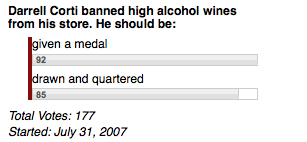
poll now closed
Buyout madness, Ratatouille, high alc — sipped and spit
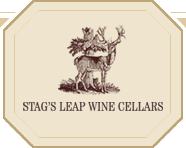 Sipped: Leaping into retirement
Sipped: Leaping into retirement
Stag’s Leap Wine Cellars was sold for $185 million. The legendary founder, Warren Winiarski, now 78, will stay on three more years in a consultative role–just long enough for the two rival movies about the Paris tasting to appear in theaters! The buyers are Ste. Michelle, a unit of UST, and Piero Antinori, who will own 85% and 15% respectively. [Reuters]
Sipped and spit: Gallo buys William Hill and Canyon Road! Duckhorn almost sold! [SF Chronicle]
Spit: Ratatouille wine
Before one bottle was on shelves, Disney canceled a Ratatouille branded wine. Was it because the wine was French while Disney’s home is in California, coincidentally also the home of 90% of American wine production? Was it the idea of selling a wine in an animated movie (at least ostensibly) aimed at kids (though wine features prominently in the film)? Or was it a new puritanical streak since they recently banned smoking from their movies? [LA Times]
Spit: high alcohol wine
Randy Dunn, maker of Howell Mountain Cabernet, says “higher alcohol wines should stop.” I guess we know how he would vote in the poll! [Appellation America]
Carbon footprint: should wine be shipped in bulk tanks?

Should wine be imported in bulk tanks to the country of consumption and then bottled there? It reduces the carbon footprint of wine. But what about the quality?
At the London International Wine & Spirits Fair (LIWSF) today, a group made such a case. The Waste & Resources Action Programme presented a paper study today arguing for the efficiencies. They no doubt have a commercial interest to gain in such a switch but here’s an example of their reasoning:
“Shipping wine from Australia [to the UK] in bulk reduces CO2 emissions by 164g for each 75cl bottle, or approximately 40% when compared to bottling at source,” they write. They continue to say that 10,584 liters of bottled wine fits in one container versus 25,000 liters of wine in a bulk tank. (But did they count for the bottles making a round trip?)
My initial reaction to this would be a big “no tanks.” After all, shipping and rail have to be so much incredibly more efficient from a carbon perspective than trucking or (gasp!) air.
As a wine geek, I’m worried about quality first and carbon second. But I recently had the charming Terra Rosa malbec from Argentina, which is brought to California for bottling so it may not be such a dire tradeoff. As long as everything is properly labeled, maybe there is a future for entry-level wines to be transported this way.
What do you think? Sound off in the comments!
Related: “Bottling Wine in a Changing Climate” [WRAP]
Eternal summer, altitude, and the gyropalette boondoggle: making wine in India
This postcard from India is by Dini Rao, formerly in the wine department at Christie’s New York, and currently finishing her MBA at Harvard Business School. You can read her first postcard here.

Wine pioneers Kapil and Kanwal Grover fell in love with wine after purchasing 1961 Mouton from Christie’s
While you can always drink wine while it’s hot, as Indians are starting to do, how do you make wine in the heat of India?!
India’s climate does not allow grapevines to become dormant, as is typical in winter. With the opportunity for two harvests, growers prune back vines to collect a single harvest per year, allowing for more concentrated fruit. Using the mild, dry winters as the growing season, harvest occurs from February to March as in the Southern Hemisphere. During the forced dormant months of April through September, the heat of summer precedes monsoon rains that nourish the vines.
High altitudes in foothill areas around Nasik and Bangalore create moderate temperatures conducive to wine grape cultivation. Maharashtra state is home to over 40 wineries, with half near the holy city of Nasik, 80 miles northeast of Mumbai. At 2000′ altitude, the wine temperature fluctuations between day and night in Nasik allow for additional flavor development.
Nasik’s viticulture began with excellent table grapes for eating, which garnered high prices due to cool temperatures and excellent water sources. Now contract grape farmers supply the burgeoning wine production with vinifera grapes such as Chenin Blanc, Cabernet Sauvignon, Shiraz and Zinfandel, but Thomson Seedless still finds its way into many bottles. Limits on agricultural land holdings require wineries to rely on farmers who lack proper training and tend to over-irrigate.
 While much sweet, high-alcohol wine still exists, modern winemaking has arrived in India with gusto. Large, air conditioned wineries are being built at an alarming rate equipped with French oak barrels, temperature-controlled fermentation tanks, and pneumatic presses. A big mystery is the use of gyropalettes, which substitute capital for labor in a country where labor is so cheap that they pay someone to press the button and give you a ticket number when you enter the Air India office. Instead of having a person come along and “riddle” the bottles of sparkling wine as they mature in the cellars, producers have invested in gyropalettes to do this task automatically (someone talked this winery into buying the bridge…).
While much sweet, high-alcohol wine still exists, modern winemaking has arrived in India with gusto. Large, air conditioned wineries are being built at an alarming rate equipped with French oak barrels, temperature-controlled fermentation tanks, and pneumatic presses. A big mystery is the use of gyropalettes, which substitute capital for labor in a country where labor is so cheap that they pay someone to press the button and give you a ticket number when you enter the Air India office. Instead of having a person come along and “riddle” the bottles of sparkling wine as they mature in the cellars, producers have invested in gyropalettes to do this task automatically (someone talked this winery into buying the bridge…).
Flying winemaker Michel Rolland has consulted for Grover Vineyards in Bangalore since 1995 and other foreign consultants present their solutions to various wineries for hefty fees. Winemakers learn to compensate for varying fruit by acidifying, adding enzymes for color, and making other adjustments with no regulatory controls. As site selection, viticulture and experience improves, Indian wine has both the potential and the market to thrive. The next hurdle will be temperature controlled shipping and storage.
Wines to watch for:
Grover Vineyards: the 2004 “La Reserve” (about $20; find this wine) carries the modern Bordeaux influence of Rolland and pairs nicely with masala lamb chops; I enjoy the dry Shiraz rosé (find this wine) and Cab/Shiraz blend for $10 – $15. (find this wine)
Sula Vineyards: the crisp, fresh and zingy Sauvignon Blanc for $12 is a must try, especially with a Kerala fish curry. Sula is owned by Stanford grad Rajeev Samant who is on his way to making Sula India’s top brand. (find this wine)
Reveilo: gets my vote for most promising winery and will be imported to the US soon; I tasted a great range of Sauvignon Blanc, CS, Shiraz and a late harvest Chenin there.
Mountain View is another up and coming quality producer, yet to be imported to the US.
Finally, if you plan to visit Nasik, I recommend a stay at Renaissance Winery‘s guest house with a European restaurant and wine bar next to the villa-like winery to sip their fresh Chenin Blanc. More photos and captions after the jump. Read more…
